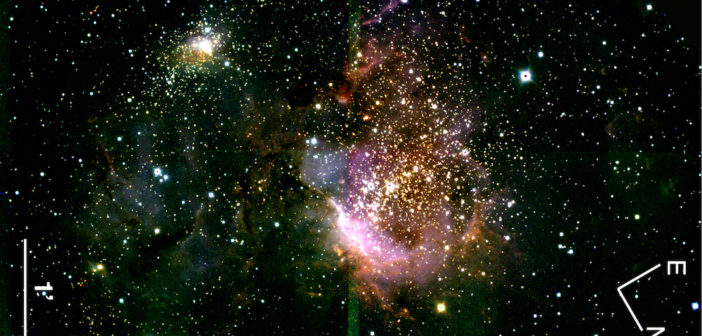When a gas cloud collapses and fragments into stars, what masses do those stars have? The mass distribution of newborn stars in a cluster is called the initial mass function. While the initial mass functions of different star clusters appear to be similar, it’s still unclear as to whether certain factors, such as the abundance of elements heavier than helium (what astronomers call metals), can affect the mass distributions of stars when they’re born. To test the possibility that the abundance of metals affects the initial mass function, Chikako Yasui (National Astronomical Observatory of Japan) and collaborators searched the outskirts of the Milky Way for star clusters poor in metals, close enough that individual stars can be studied, and young enough that the stellar population still reflects the cluster’s initial mass function. The image above shows the team’s near-infrared observations of two suitable star clusters, which contain ~350 and ~1,500 stars each and are just 3 and 5 million years old, respectively. The team’s results suggest that these clusters might contain more high-mass stars than clusters rich in metals do, but further work is necessary to confirm this result. To learn more about this study, be sure to check out the full article linked below!
Citation
“Mass Function of a Young Cluster in a Low-metallicity Environment. Sh 2-209,” Chikako Yasui et al 2023 ApJ 943 137. doi:10.3847/1538-4357/ac94d5
